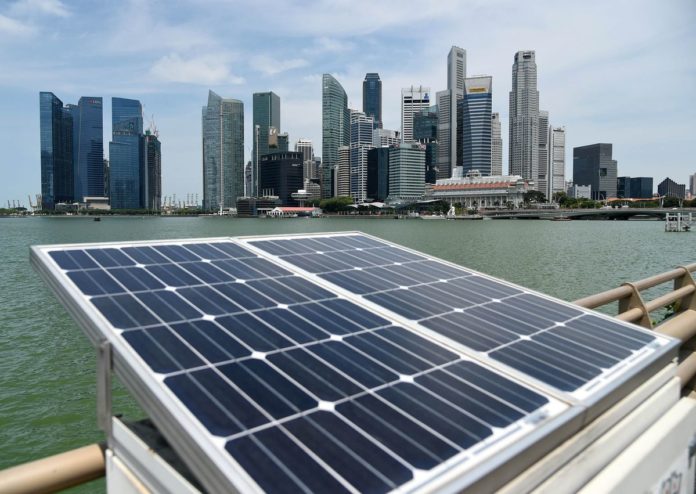On a small island off the southern coast of Singapore, a French energy company is experimenting with what it hopes will be the future of renewable power storage.
Engie SA is helping build a small, self-contained power grid on Semakau Island to demonstrate the usefulness of hydrogen gas in converting intermittent power from solar panels and wind turbines into stored ga that can generate electricity days or even months later, when the require is higher.

Plummeting costs for solar and wind are helping renewable energy steal an ever-greater slice of the power generation pie from fossil fuel such as oil and coal. That attains it more and more vital to figure out how to spread out the brief but intense volleys of energy harnessed from the sunshine and wind to the more diffused needs of consumers. While battery storage has received most of “members attention” so far, hydrogen has ” massive long-term potential ,” told Didier Holleaux, executive vice president at Engie.
” Batteries are fine for intraday, or a few hours ,” Holleaux said in an interview in Singapore.” But if you create energy in summer and need it in winter, or need it to last during a few cloudy days, then hydrogen would be the obvious answer .”
To be a solution, though, hydrogen storage expenses would have to come down dramatically. A hydrogen-based energy storage system expenditure about 10 times bigger than a diesel back-up generator with similar power output, according to a Toshiba Corp . presentation at the World Smart Energy Week in Tokyo in March.
Hydrogen storage is basically a three-step process: electricity powers a chemical process know as electrolysis that splits sea into hydrogen and oxygen. The hydrogen is then stored until it’s needed, and is then pumped through ga cells to generate electricity.
The biggest impediment to commercial viability is the electrolysis process, Holleaux told. Manufacturers are trying to make the water-splitting equipment cheaper and more efficient, but are likely 10 to 15 years left, Holleaux said.
Micro-grid Target
” Electricity expenditure are a major component of the total expenditure for hydrogen production ,” told I-Chun Hsiao, an analyst with Bloomberg New Energy Finance.” Access to cheap electricity and improvements in electrolyzer efficiencies are essential to improving the economic attractiveness of hydrogen, regardless of scale .”
The Semakau Island project, which Engie is taking part in along with Singapore’s Nanyang Technological University and France’s Schneider Electric SE, aims to build demonstration micro-grids that integrate gust, solar, tidal and diesel power along with storage to provide electricity to small island communities not connected to traditional power plant. The micro-grid is expected to be operating by October, with hydrogen storage abilities added next year, Holleaux said.
Engie recognizes big opportunities for such micro-grids in Southeast Asia, especially in the Indonesian archipelago, where virtually 1,000 islands have populations that don’t have access to traditional power plants.
” It’s a region that’s open to invention ,” Holleaux told.” Many countries are ready to leapfrog directly from no power at all to a altogether decentralized type of power, rather than “re going through” the traditional centralized, interconnected network .”
Read more here: http :// www.bloomberg.com /~ ATAGEND







